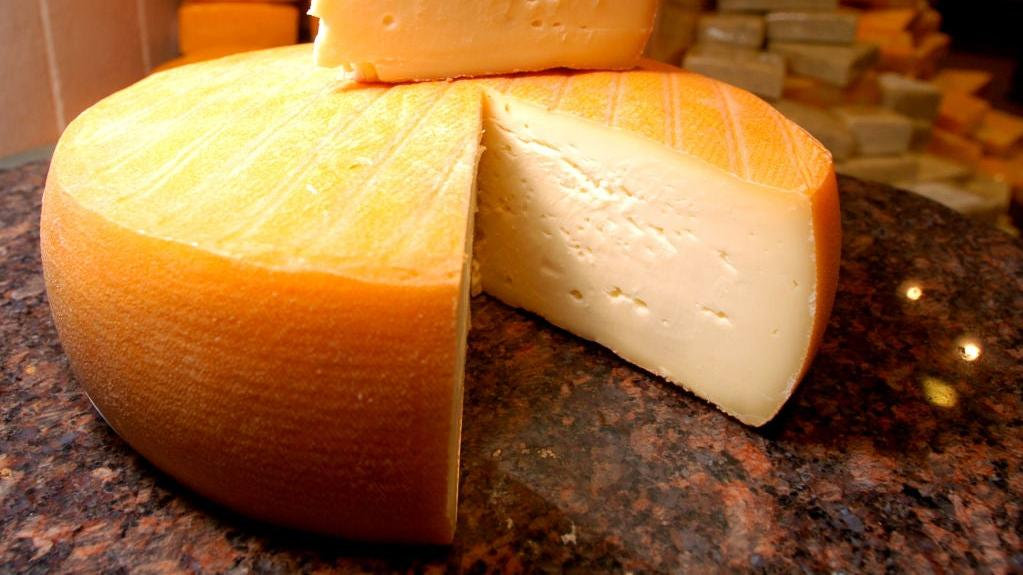Who Knew These Cheese Rinds Were Safe To Eat?
Plus, three types of non-edible rinds you should definitely avoid.
Sweatpants? On. Olympics? Blaring. It's Friday night, you've settled on the couch, and you're ready to start working on your night cheese. You chow down, but then you ask yourself: What am I to do with all of this beautiful rind? Turns out, there are plenty of delicious, edible cheese rinds out there that can be enjoyed like a bread crust. Of course, there are also some inedible rinds out there. (Looking at you, Babybel wax.) You can have yourself a rip-roaring rind time—you just have to know what to look for. For a brief primer, we looked to Molly Browne, the education manager for Dairy Farmers of Wisconsin and certified American Cheese Society expert.
Edible cheese rinds
In the cheese-mongering world, popular edible cheese rinds typically fall into one of three categories: Bloomy, Flavored, or Washed. A bloomy rind typically accompanies soft-ripened cheeses like brie. These rinds are composed of a very flavorful amalgamation of mold and yeast, encouraging the cheese inside to ripen and form their signature soft, creamy texture.
A flavored rind is exactly what it sounds like: a cheese rind that is intentionally flavored using ingredients like beer, wine, or spices. They're crafted specifically for the cheeses within. Basically, it'd be a crime not to eat these rinds.
Finally, a washed rind is a rind that has been created via a brine rinse. These rinds typically accompany pungent cheeses like Langres or Limburger, which are gently bathed in a saltwater wash to bring out their savory, funky flavors. If you're into funk, a washed rind will knock your socks off.
Cheese rinds to avoid
If you've ever plunked a parmesan rind into a pot of soup, you know how tantalizing that flavor can be. These rinds fall into the natural rind category, and while they're technically edible, they're usually best used in soups or broth since they're quite hard. There are, of course, several types of unnatural rinds to avoid if you're looking for a rind fix. Browne explains that bandage-wrapped rinds, like those often accompanying aged cheddar, aren't edible and should be removed before eating your cheese. Finally, this likely goes without saying, but wax rinds—those accompanying semi-firm cheeses like gouda, for example—are not edible, although they may technically be food-safe.
When in doubt, give your cheese a cursory google search to find out if the rind is edible. And if you take a bite without thinking, don't panic. Even bandage-wrapped or wax rinds won't kill you. (Probably.) And if they do, you'll go out doing what you love: snackin' on cheese.
